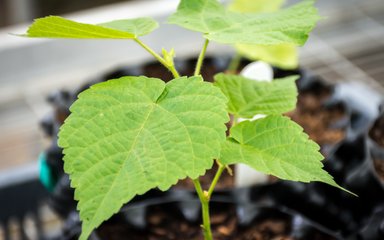
Protecting our trees
Every plant brought into the arboretum presents a potential risk to collection, as pests and diseases can travel in seeds other organic material. The risk from pests and diseases has never been greater. Of the world’s 60,000 tree species, around 20,000 have been assessed for conservation, and nearly 10,000 are thought to be threatened with extinction (though not all from pests and diseases). There currently 32 main pests and diseases threatening the UK’s trees, not to mention countless other threats, and this number is growing all the time. Shorter winters, warmer climates and the ability of pests diseases to travel great distances in organic material means that our trees are under continuously means that our trees are continuously under threat.
Westonbirt Arboretum has a crucial role to play in working protect native and exotic tree species, both by providing a resource for seed of species threatened with extinction in their native habitats, and researching how best to protect different species against the multitude of threats they now face. To help us to safeguard the collection and plant new trees we have built a Quarantine House.

The need for a Quarantine House
A Quarantine House means that all new plants and seeds, and associated organic matter, can be separated both from other plants in the Propagation Unit and from those in the living collection. The specialist facility enables us to constantly monitor and inspect new plants and apply the correct biological controls if needed.
It also enables us to introduce improved propagation protocols, concerning the management of incoming seeds and plants, to increase efficiency and further reduce risks. We are better equipped to comply with industry best practice and guidance, and the strict rules on movement of plant material.
Quarantine House features
- two separate compartments allow us to keep plants from different intake batches separate, reducing the risk of contamination if any do carry pests or diseases.
- an outer poly-tunnel provides essential protection against the elements, stopping ingress of water from above and shield an inner structure.
- the isolation bays are covered in aphid mesh and securely sealed.
- the external entrance into the inner central compartment/corridor has sealable doors, and there are also sealable doors on either side of the central compartment/corridor for entry into the isolation bays on either side.
- within the central compartment/corridor, there is storage for nursery equipment.
- running (hot/cold) water with a sink and drainage within each growing bay/compartment.
- the floor of the isolation bays is gently sloped to a central drainage point.
- electric fans positioned effectively to increase air circulation.
The Quarantine House also presents an opportunity to promote the importance of biosecurity to our visitors.


Thank you to our supporters
This project was partly funded by the Friends of Westonbirt Arboretum, a charity which supports the arboretum with the help of nearly 39,000 members. Further support from donors and external funders raised an amazing £30,000 towards this project. With special recognition to The Finnis Scott Foundation, The Banister Charitable Trust, and Stanley Smith (UK) Horticultural Trust for helping to protect the trees at Westonbirt with their generous contributions.
Rainwater collection system
As part of Forestry England’s aim to be net carbon zero by 2030, a new rainwater harvesting and filtering system has been installed at Westonbirt, The National Arboretum. This new rainwater filter system is a first for Forestry England and will reduce the amount of water being used; completing the facilities that support the new Quarantine House in the arboretum’s Propagation Unit.
Based on an average year’s rainfall, the system has the capacity to collect a massive 90,000 litres of rainwater per year and its collection tanks can store nearly 26,000 litres that’s equivalent to 132 bathtubs of water.

